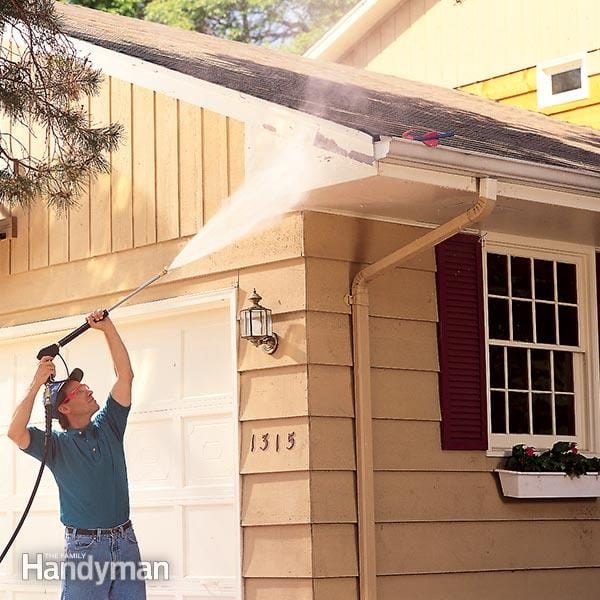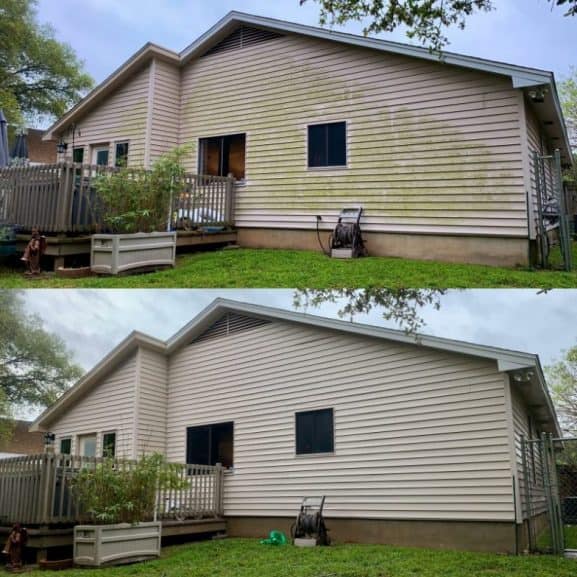Comprehending the Key Distinctions In Between Pressure Washing and Home Washing
The distinction in between pressure washing and residence washing is vital for house owners looking to keep their residential or commercial property's exterior. While pressure washing uses high-pressure water jets to remove stubborn crud from robust surfaces, residence washing uses a gentler technique that includes green cleaning agents to shield even more delicate products.
Meaning of Pressure Washing
Pressure washing, typically referred to as power washing, entails making use of high-pressure water spray to remove dirt, crud, mold, mold, and other contaminants from different surfaces. This strategy is particularly reliable on difficult surface areas such as concrete, brick, and rock, making it an optimal choice for cleaning up driveways, patios, and walkways. The procedure typically makes use of specialized tools that generates water pressure varying from 1,500 to 3,000 psi or even more, ensuring efficient cleansing even in difficult problems.
Pressure washing is not limited to exterior surfaces; it can also be utilized for various applications, including cars, outside furniture, and tools. It is crucial to note that the strength of the water pressure can possibly harm fragile surfaces, such as timber or painted finishes, if not handled appropriately. For that reason, choosing the suitable pressure setup and nozzle kind is crucial for optimal results.
Along with surface area cleansing, pressure washing can also play a significant role in preserving the durability of structures by protecting against the buildup of hazardous pollutants that can cause damage. Generally, pressure washing acts as an effective device for boosting sanitation and maintaining the stability of numerous surface areas.
Meaning of Home Washing
Home washing refers to the detailed cleansing of a home's outside surface areas, using a combination of low-pressure water and specialized cleaning options. This approach is created to eliminate dirt, mold and mildew, mold, algae, and various other pollutants that build up over time, preserving the visual charm and structural honesty of the residential property.
Unlike pressure washing, which utilizes high-pressure streams of water, house washing stresses using lower pressure to avoid damage to fragile surface areas such as exterior siding, roofing, and repainted finishes. The cleaning services utilized are usually eco-friendly and created to effectively deal with particular concerns, making sure a detailed tidy without jeopardizing the setting or the honesty of the materials being treated.
Residence washing is especially valuable for maintaining the look of plastic, timber, stucco, and block exteriors. Routine home washing not just enhances curb appeal yet additionally adds to the longevity of a home's exterior surfaces by mitigating the effects of harmful microorganisms and ecological contaminants. Home owners visit homepage are urged to set up residence washing regularly to guarantee their residential property continues to be in optimal problem, thus securing their financial investment.
Trick Strategies Made Use Of
In the realm of exterior cleaning, numerous strategies are used to achieve optimal outcomes during home washing. The main technique includes soft washing, which utilizes low-pressure water combined with specialized cleaning solutions. This method efficiently eliminates dirt, algae, and mold without damaging fragile surfaces such as wood or painted exterior siding.
An additional key technique is the use of a surface area cleaner go to website accessory, which is especially efficient for flat surface areas like patios and driveways. This device gives consistent cleaning by making use of revolving jets that cover a larger area, ensuring regular outcomes.
Chemical application is also critical in residence washing. Cleaners such as salt hypochlorite or biodegradable cleaning agents are commonly used to break down see this difficult stains and natural growth. House Washing. Correct dilution and application approaches are important to lessen any type of potential damage to plants or landscaping
Suitable Surfaces for Each
Pressure washing, which utilizes high-pressure water jets, is finest matched for hard, resilient surface areas that can withstand intense pressure. These surface areas typically collect difficult discolorations, such as oil, grease, and mildew, which call for the effective cleansing action given by pressure washing.
On the various other hand, house washing usually utilizes a softer strategy, utilizing low-pressure water integrated with specialized cleaning agents. This approach is ideal for more fragile surface areas, consisting of painted wood, vinyl home siding, and stucco. Residence washing effectively removes dust, plant pollen, and mold and mildew without risking damage to the exterior coating. It is specifically advantageous for locations where sensitive materials are entailed, as it minimizes the potential for chipping or stripping paint.
Benefits and Drawbacks

On the various other hand, residence washing uses a gentler strategy, typically using a combination of low-pressure water and cleaning options. This approach is safer for repainted surface areas, siding, and roofing systems, assisting to maintain their integrity. The main downside of residence washing is that it may not remove deeply ingrained dust or persistent stains as effectively as pressure washing, which can call for even more time and multiple applications.

Final Thought
In summary, pressure washing and house washing serve distinct purposes in outside cleansing. Pressure washing utilizes high-pressure water streams, making it ideal for sturdy surfaces and reliable versus difficult discolorations. Conversely, residence washing makes use of a low-pressure strategy with naturally degradable remedies, guaranteeing the safety of delicate materials. Recognizing these differences assists in notified choices concerning the proper cleaning method based on surface type and problem, eventually advertising effective upkeep and long life of outside surfaces.